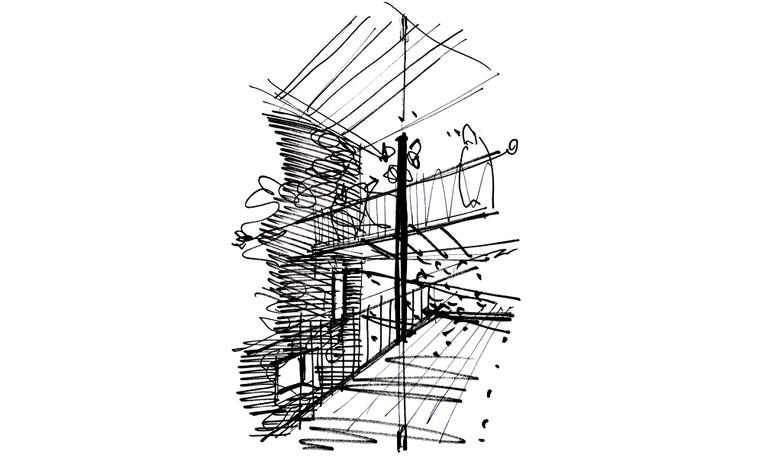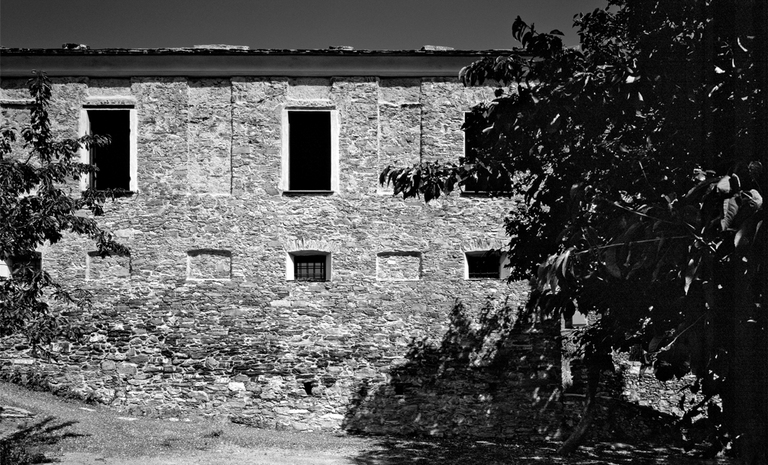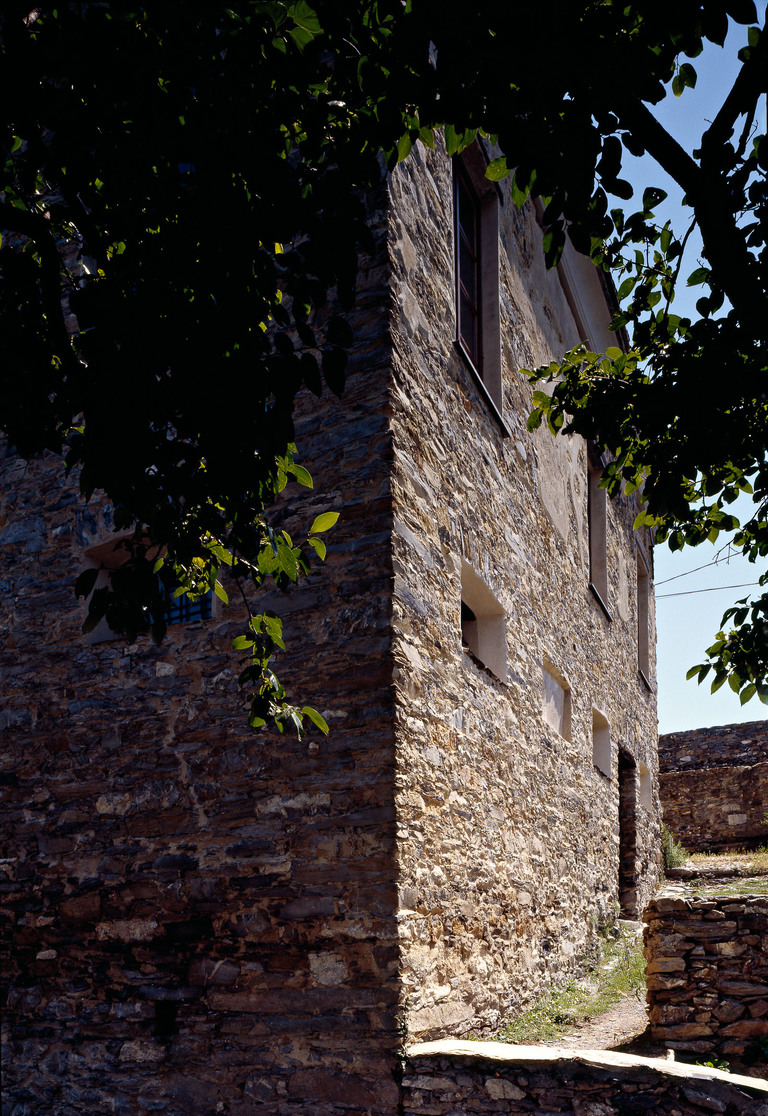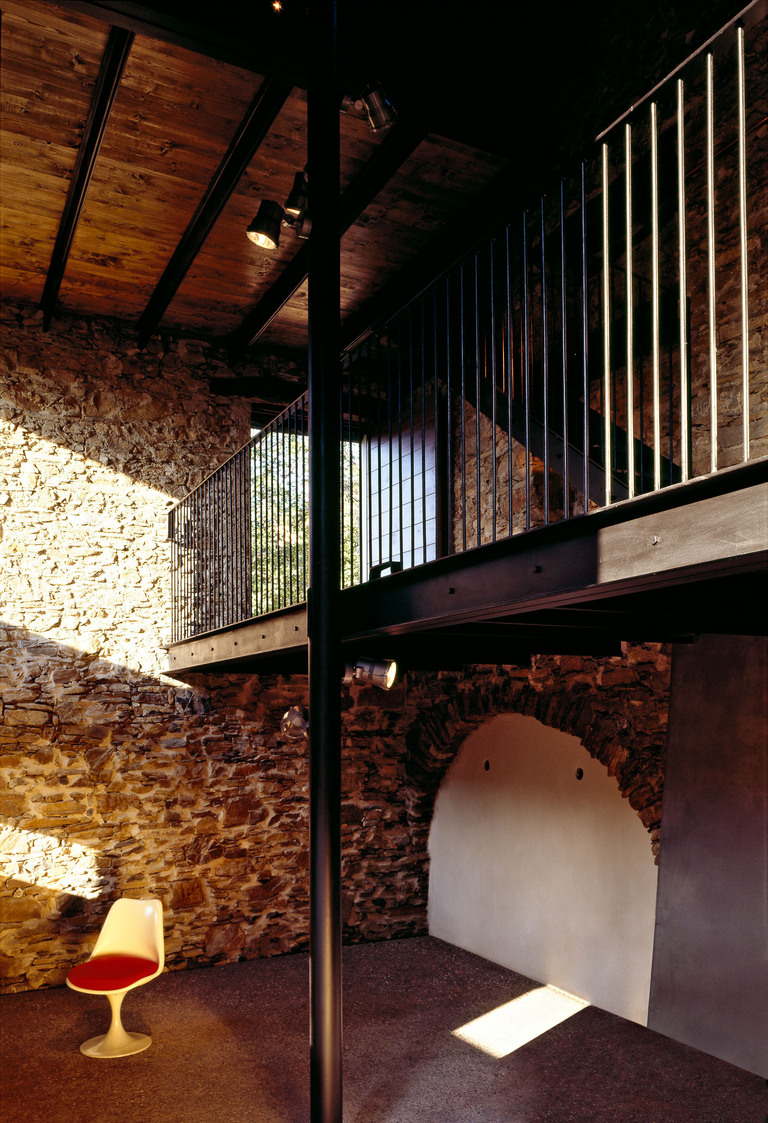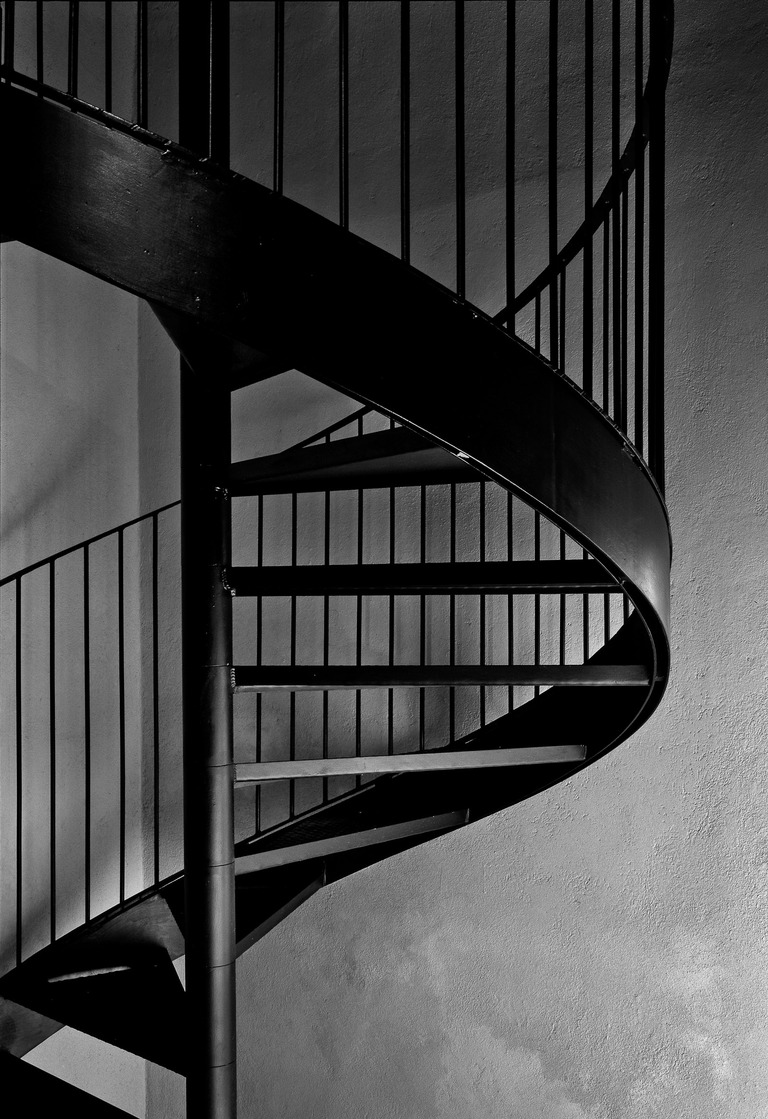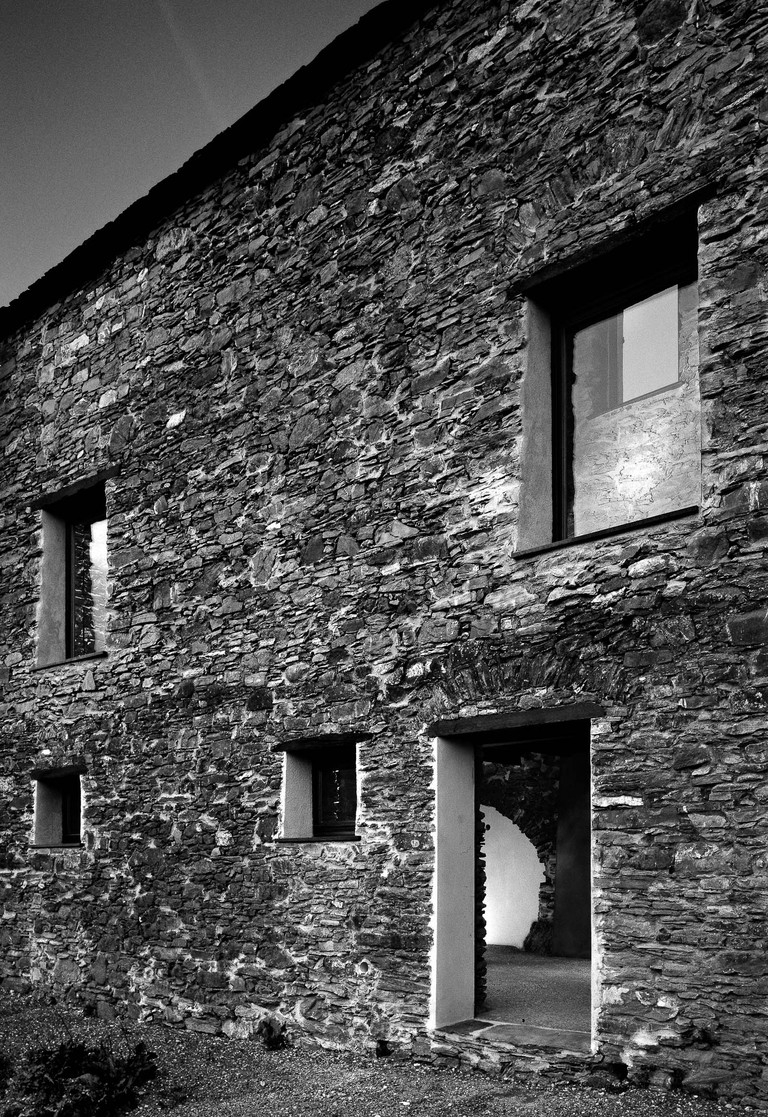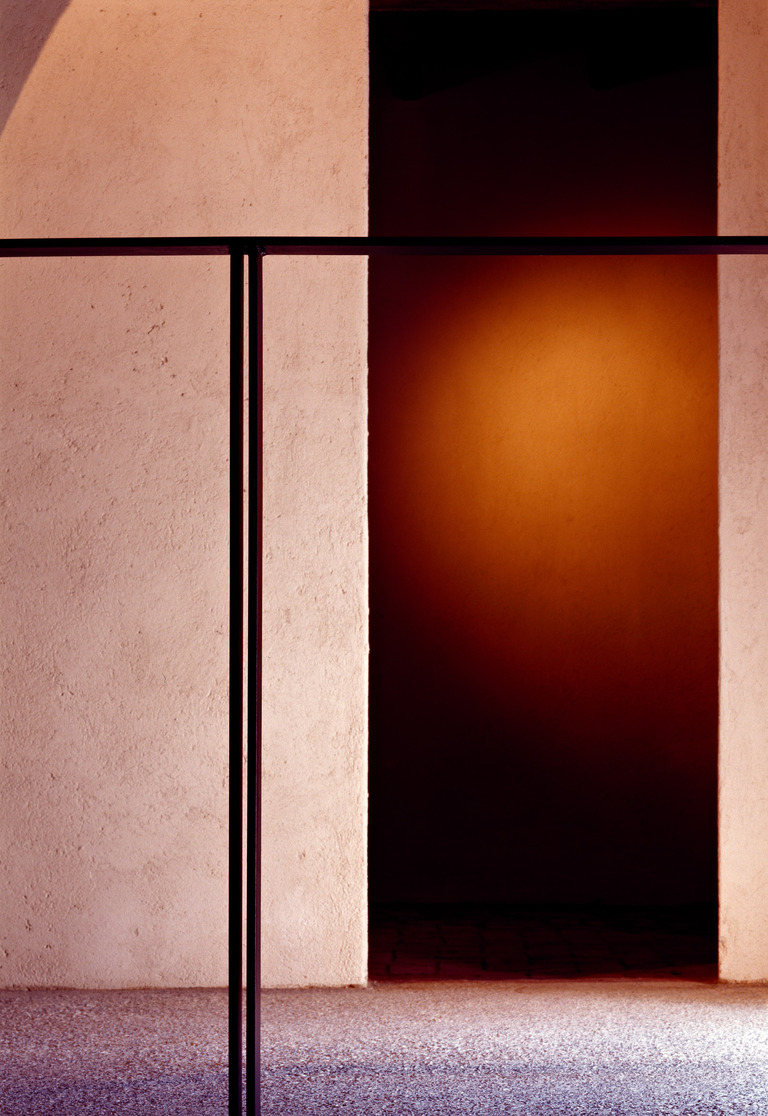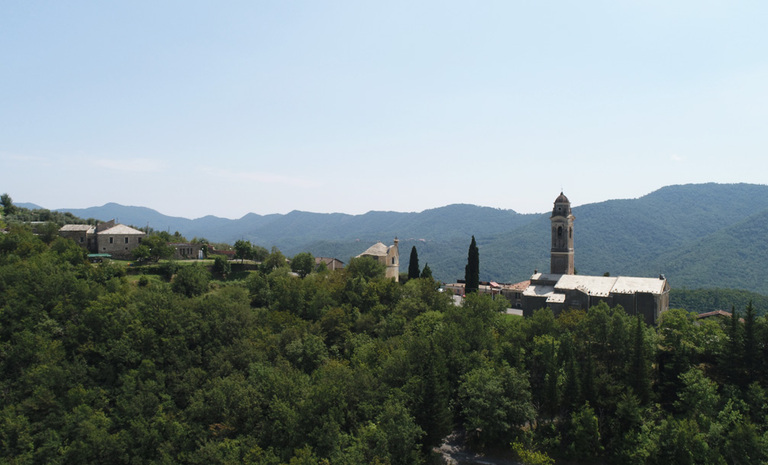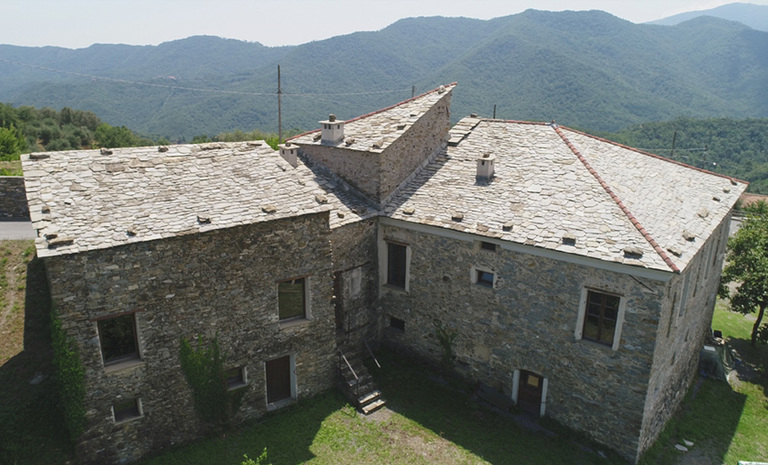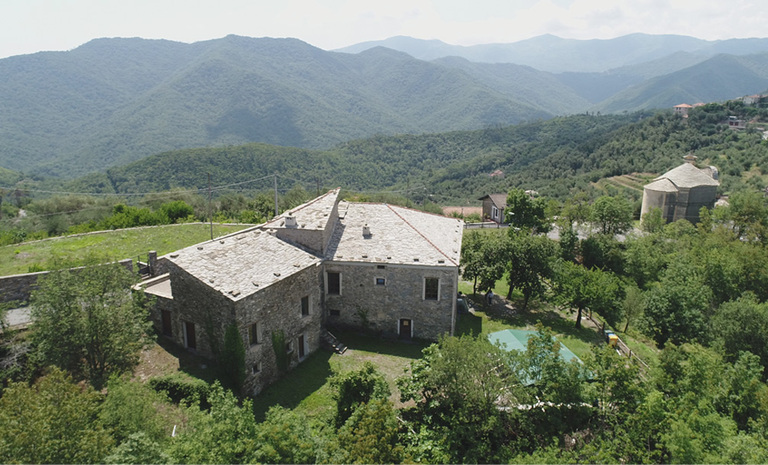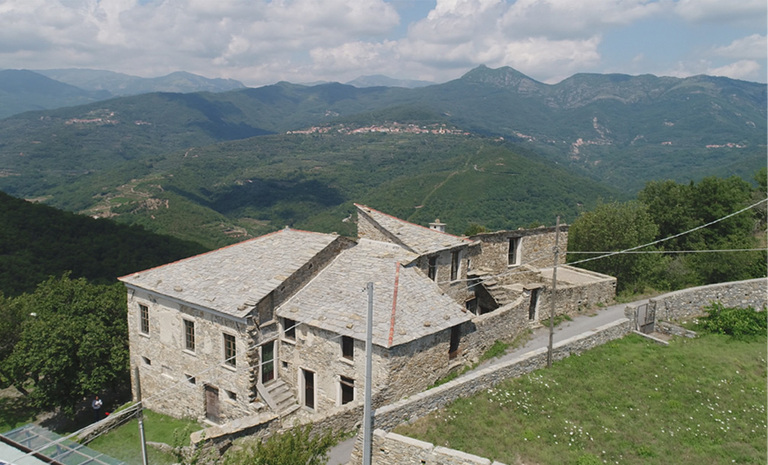Museo dell'olivo - Olive museum
Casanova Lerrone, frazione Marmoreo, (SV), 2011.
foto Alberto Piovano.
Il complesso dell’Antico Frantoio di Marmoreo sorge sulla sommità di crinale in Frazione Marmoreo, mentre le caselle sono nei boschi di Casanova Lerrone. Il progetto, finanziato dalla Regione Liguria, consiste nel recupero di tre caselle di presidio agricolo e di un antico frantoio per olive finalizzato all’utilizzo per scopi museali, didattici, culturali e di interesse pubblico. La ricerca è stata fondata sulle modalità con cui l’antropizzazione del territorio ha consentito lo sviluppo di una rete di presidio territoriale.
Essa è costituita da un avamposto, la Casella, da un tessuto connettivo, il Percorso, un polo principale di riferimento, il Frantoio: un NET produttivo attraverso cui si è storicamente strutturato il presidio di ampie porzioni di territorio. Il progetto interessa alcuni manufatti ed edifici che in breve si identificano in : Caselle, Percorso, Frantoio.
Il Frantoio è la casa del coltivatore di castagne e del frantoi ano ed è costituito da un edificio di grandi dimensioni localizzato in posizione strategica rispetto al territorio, dove il materiale proveniente dalla coltivazione dell’olivo e della castagna veniva scelto, lavorato ed accumulato. Il Frantoio di Marmoreo è un frantoio “ a sangue”, cioè mosso da animali, ed è stato restaurato e destinato ad attività espositive.
Pietra, ciappe, ferro.
https://divisare.com/projects/307021-studiorossi-secco-alberto-piovano-museo-dell-olivo
_________________
Casanova Lerrone, frazione Marmoreo, (SV), 2011.
foto Alberto Piovano.
The complex of the Antico Frantoio di Marmoreo stands on the top of the ridge in the hamlet of Marmoreo, while the boxes are in the woods of Casanova Lerrone. The project, financed by the Liguria Region, consists in the recovery of three agricultural garrison boxes and an ancient olive mill intended for use for museum, educational, cultural and public interest purposes. The research was based on the ways in which the anthropization of the territory has allowed the development of a territorial protection network.
It consists of an outpost, the Casella, a connective tissue, the Path, a main reference pole, the Frantoio: a productive NET through which the protection of large portions of the territory has historically been structured. The project involves some artifacts and buildings that are briefly identified in: Caselle, Path, Frantoio.
The Frantoio is the home of the chestnut grower and the oil mill and consists of a large building located in a strategic position with respect to the area, where the material from the cultivation of olives and chestnuts was selected, processed and accumulated. The Frantoio di Marmoreo is a "blood" oil mill, i.e. moved by animals, and has been restored and used for exhibitions.
Stone, ciappe, iron.
